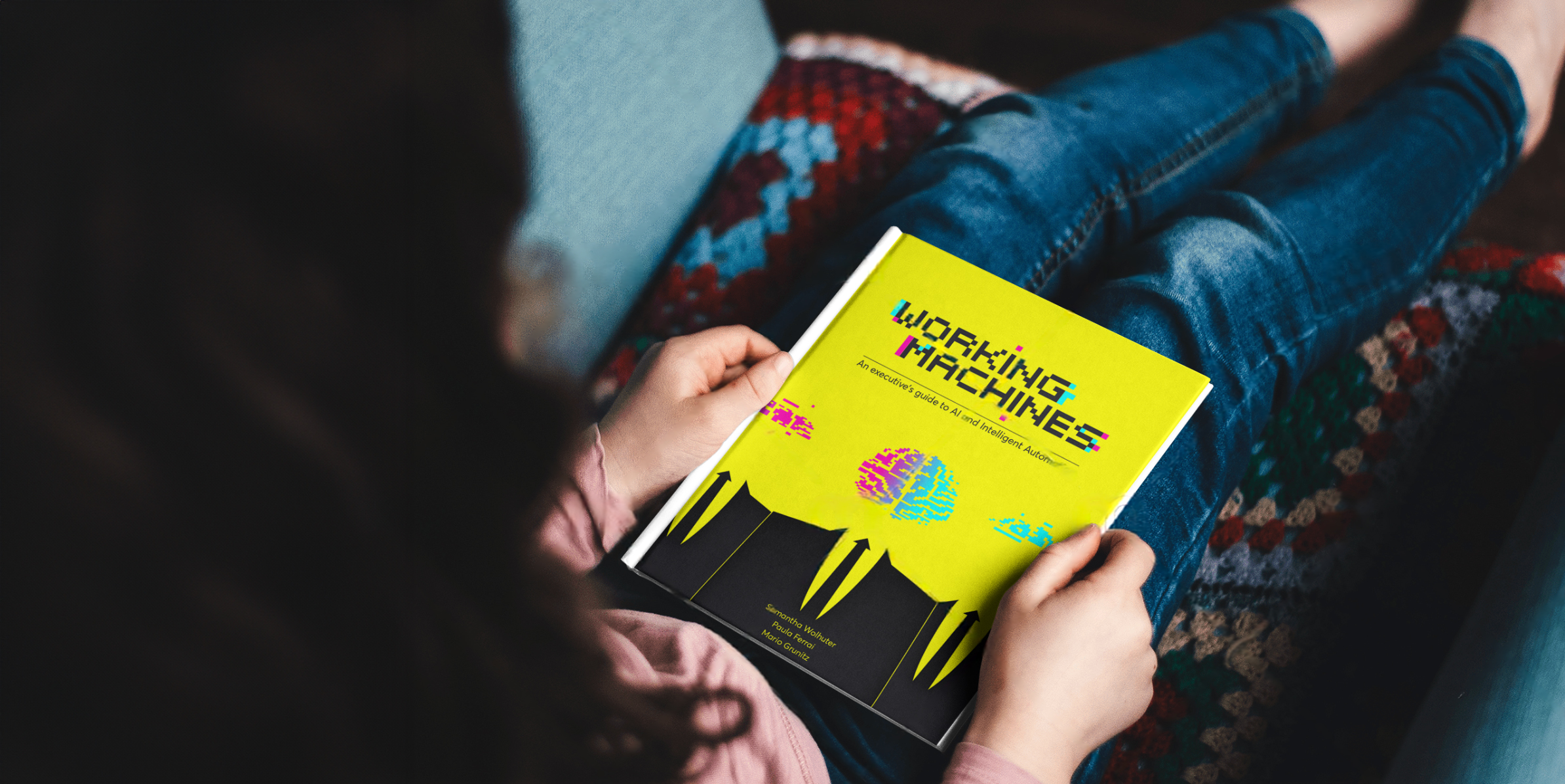
“Do you have flowy, colourful trousers in my size that work for Lindy Hop on a warm dance floor?”
When users ask with this level of nuance, they expect an answer, not a menu to browse. Large language models like ChatGPT and Perplexity already interpret such intent and generate useful responses. Online users increasingly expect the same from your website: not merely to display information, but to clarify, guide, and convert.
This article explores how AI-driven websites represent a fundamental shift in digital experience, why human-centred design principles remain essential, and how to navigate this transition thoughtfully.
Why the ‘Brochure and Catalogue’ model no longer suffices
We built websites primarily as brochures or catalogues. That model continues to serve a function, yet its limitations are becoming apparent:
Cognitive overload: Visually dense, navigation-heavy interfaces force users to work too hard to find what matters. Complex menus, unfocused content, and competing calls to action obstruct straightforward answers.
Search inadequacy: When a user’s task is specific, their instinct is to search. Yet standard site search returns only links to pages, not answers.
Strategic vulnerability: If your website remains a passive data source for LLMs or external aggregators, you risk invisibility. Others will harvest your content and redirect your users.
Without a conversational, answer-driven layer embedded in your site, you relinquish control over the interface mediating between your users and your offerings.
The question shifts from “Do we add a chatbot?” to: How do we transform your website into an intelligent, interactive surface that serves as your organisation’s best representative?
What endures in an AI-driven paradigm
Whilst AI evolves rapidly, human cognition remains bounded by long-standing limitations. Conversational interfaces must respect these truths:
Limited working memory: Users cannot hold multiple threads simultaneously. Break tasks into digestible steps and maintain visible context throughout interactions.
Need for predictability: AI feels powerful, yet users require safety. Provide clear cues, control mechanisms (reset, go back), and transparency about how their input is used.
Pattern-seeking behaviour: Users expect organised information. Conversational UX must mirror mental models rather than force unfamiliar taxonomies.
Spatial navigation: Without stable visual anchors, users become disoriented. Retain structure, breadcrumbs, and persistent context panels to prevent confusion.
Latency sensitivity: Users will not wait. Even complex tasks must feel responsive through background processing, optimistic UI, or progressive reveal strategies.
Anthropomorphism: Resist the temptation to create an overly human persona. Aim for an experience that feels powerful because it leverages machine intelligence, not because it pretends to be human.
Voice interfaces add accessibility and emotional connection, yet consistency matters: the same intent understanding and brand personality must persist whether users read, type, or speak.
Challenges requiring immediate attention
Anticipating obstacles proves as crucial as designing the vision.
SEO and discoverability: Your site requires crawlable pages, metadata, and schema markup. Conversational output should complement this structure, never replace it. Search engines must continue indexing your core content.
Prompt injection and abuse: Conversational interfaces face misuse. Implement filtering, sandboxing, rate limits, and human review for critical areas.
Hallucinations and trust: LLMs can generate plausible yet incorrect answers. Display confidence indicators, cite sources, and enable users to escalate to stable pages or human support when needed.
Domain drift: Models lose relevance over time. Keep knowledge modular, retrain regularly, and version content to enable updates without system-wide disruption.
Maintaining narrative flow: The traditional brand narrative funnel still matters. Dialogue should reinforce your story, not override it.
Graceful degradation: When AI cannot respond adequately, redirect to pages, forms, or people. Transparency builds trust.
Real-World Applications
We have explored this territory through projects that illustrate both promise and pitfalls.
Product discovery optimisation: For Praxis/Maxeda, we built a Product Locator combining store layout data with conversational layers. Customers ask “Where is product X?” and receive precise aisle information. Staff manage layout metadata to reflect real-world configurations. The conversational interface integrates deeply into the product discovery path.
Process automation: We created “Harry,” a workbot guiding vendors through complex procurement workflows. This illustrates how conversation, UI integration, and process orchestration reduce friction and errors.
Security lessons: We deployed a chatbot on our own site but removed it due to spam and prompt-injection attempts. This experience informed our approach to sandboxing and abuse prevention.
A pragmatic roadmap
Transform your website incrementally rather than attempting wholesale replacement:
Audit and modularise content: Map existing pages into domain modules and knowledge graphs. Identify high-value conversational candidates (product discovery, FAQs, support).
Pilot limited domains: Select a narrow vertical (one product category or support flow) and add a conversational assistant that clarifies, recommends, and links to pages.
Embed guardrails from inception: Implement input validation, fallback pathways, human handoff, logging, and moderation.
Observe and iterate: Monitor task success, user satisfaction, and fallback rates. Use collected data to refine prompts and train domain modules.
Evolve towards blended interfaces: Gradually introduce conversational surfaces that coexist with content, visuals, and transaction flows.
Govern and refresh: Maintain domain knowledge as your single source of truth. Version changes, review answers, and remove outdated information.
Over time, your website transforms from static brochure into trusted, intelligent guide where structured content, conversational immersion, and transactional capabilities work in harmony.
Vision: your digital representative
Consider a website greeting visitors with a simple prompt: “What brings you here today?“
You type: “Do you have flowy, colourful trousers in my size that work for Lindy Hop on a warm dance floor?”
Your digital representative interprets the intent (movement, comfort, style, context) and presents realistic visualisation of how such trousers perform. Behind the scenes, generative AI models collaborate to translate natural language into meaningful, visual answers. Each interaction enriches the system’s understanding of customer intent and domain-specific nuance.
The traditional, crawlable site persists for transparency and discoverability, now enhanced by an adaptive, multimodal layer that authentically represents your brand and serves your users.
Why this matters now
For decades, interaction evolved from desktop to mobile to voice, always requiring humans to adapt. LLMs reverse that pattern: they adapt to us. These systems interpret intent even when language is imperfect (typos, fragments, missing context) and respond with precision.
This ability to understand before we fully articulate represents a genuine paradigm shift. Websites built around menus and click paths feel outdated because users now expect to ask and receive answers.
If your site remains static, you risk becoming invisible. Move too slowly, and others will control how your content is represented. Yet if you experiment now with design sensitivity, cognitive respect, and technical rigour, you can lead this transition.
At WeAreBrain, we have explored this shift through conversational systems and hybrid interfaces, applying lessons from client projects and our own experiments. We understand both the promise and the pitfalls, and we know where to begin safely.
If your organisation is ready to evolve beyond the brochure model and create a digital representative that authentically understands and serves your audience, let us design and build what comes next together.
